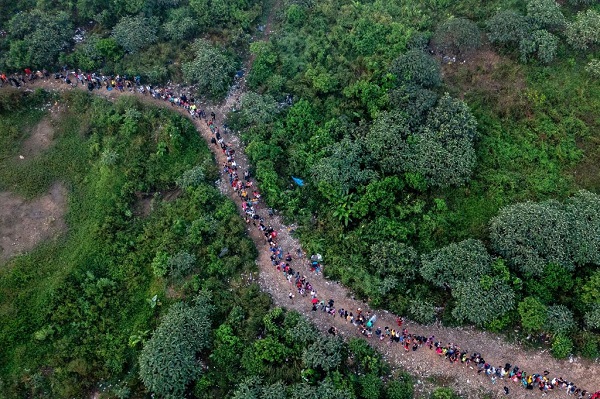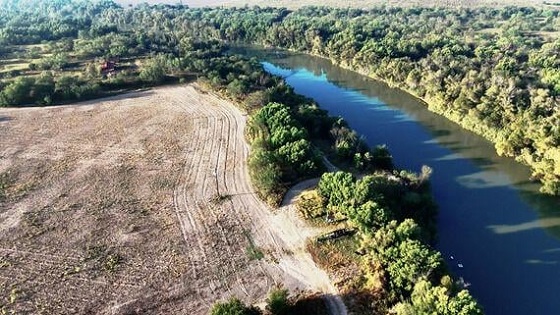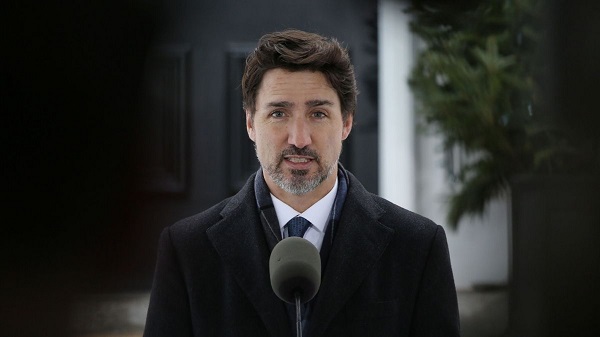illegal immigration
Potential game changer: Will Panama’s new President really ‘close’ the Darien Gap?

From the American Mind: A publication of the Claremont Institute
By Todd Bensman
Panama Pinch Point: Closing the Darien Gap would be a big step toward stopping the flow of migrants north.
Panama’s new president, Jose Raul Mulino, recently began his five-year term with a keynote promise that may help decide the upcoming U.S. presidential election.
Mulino has vowed to “close” the infamous “Darien Gap” immigrant passageway over the border from Colombia to Panama, the jungled 70-mile bottleneck of wilderness foot trails through which nearly 1.5 million immigrants from 150 nations have passed to the besieged U.S. Southwest Border.
“The border of the United States, instead of being in Texas, moved to Panama,” said Mulino, who served as security minister under former president Ricardo Martinelli. “We’re going to repatriate all those people.”
Elsewhere since, Mulino doubled down on his promise to “end the odyssey of the Darien.”
“Those from here,” he said in a May 9 speech, referring to his country. “And those who would like to come know that whoever arrives here will return to their country of origin. Our Darien is not a transit route. No sir. That is our border.”
That warning shot alone, by a sitting executive of Panama, has reverberated throughout the Western Hemisphere but has drawn little public analysis. For starters, the vow signaled a sharply lower trajectory to the historic U.S. mass migration border crisis, which I predicted in December 2020 would emanate from the Gap and did so in numbers that rocketed skyward after Biden’s 2021 inauguration.
Whereas fewer than 20,000 each year went through the Darien for decades, Biden’s border policies, featuring high-percentage acceptance of illegal entries and quick releases into the American interior, beckoned more than 130,000 immigrants from a great diversity of nations to cross the gap that first year of 2021. The number shot to 250,000 by the end of 2022, then 520,000 during 2023 and is on pace to a projected 800,000 before 2024 is out.

Inadvertently or not, Mulino’s closure of the Darien Gap more than three years into this torrent can only help President Joe Biden’s reelection prospects, a border crisis that polls regularly show tops the most important problem list for the U.S. presidential election.
The big question that begs analysis is whether President Mulino can or will follow through on the aspiration and relieve Panama as perhaps the world’s most trammeled immigration transit nation, ease the crushing fiscal burdens pushing destination U.S. cities toward bankruptcy, and save Biden from voter punishment for it all in November.
The short answer is that Mulino seems determined to give this a real yeoman’s effort. For instance, he has already begun groundwork, like appointing as Security Minister Frank Abrego, founder of Panama’s Border Police (SENAFRONT) who is known as a close-the-gap hawk with deep experience battling Colombian rebels in Darien and who is already preparing trail “checkpoints.” His main given mission, according to local media accounts is to close the gap.
But any early optimism by Biden’s campaign managers or long-suffering American cities must be tempered by the fact that powerful forces are arrayed to prevent Mulino’s success. Those would include liberal progressive open borders elements in Biden’s government who want mass migration; United Nations and non-governmental migrant advocacy agencies set up in Panama’s “City of Knowledge” that also want the unprecedented revenue that has bloated them; and a Colombian government that would be stuck with backlogged immigrant populations.
The prognosis for Mulino’s success, in my opinion and of others familiar with Panamanian immigration politics, is not good despite his best intentions.
Minding the Gap
What Mulino has proposed is a dramatic 180-degree policy swivel for the isthmian nation that portends a seismic earthquake to be felt around the world. Knowing how human traffic funnels into this narrow, blockade-able channel is essential to understanding what he has in mind and what would happen afterward.
To reach the gap, immigrants in South America move toward Caribbean beach towns like Necocli and Turbo in the far northwestern corner of Colombia, on the east side of the Gulf of Uraba.
With Colombia’s full acquiescence along that shoreline, the immigrants pile into passenger ferries and other boats that cross them west across the gulf and land them on beaches closer to Panama, whence trailheads start inland. From these trailheads, migrants typically have to cross some 60 or more roadless miles of wilderness mountains and rivers to reach the Panamanian border, which once took up to a week or longer. More recently, a shorter river route was opened.
Once on the Panama side, prevailing policy had immigrants and SENAFRONT border police looking to unite with one another for one of the most unusual policies in the world: a government human smuggling policy called “controlled flow.”
As I first reported in late 2018 from Darien Province, the outrageous controlled flow policy, presumably about to be cancelled, aimed to make sure migrants did not have a chance to linger in Panama. Once SENAFRONT has custody of the gap-exiting immigrants, the agency transports or directs them to various expanding hospitality camps near a main highway where they are fed, sheltered, treated if sick, and given access to money-wiring services and communications.
Then, SENAFRONT organizes commercial bus caravans to drive them all on to Costa Rica, whose own government checks them in and transports them north for delivery to criminal smuggling groups in towns along Nicaragua’s border for the leg to Honduras, as I reported in a three-part 2022 series from that region.
While Panama and Costa Rica may have to shoulder increasing costs of running camps and buses, at least they weren’t the ones getting stuck with the hot potato of needy immigrant populations. They move that hot potato from Colombia to the United States, which never objected to these government passing it on, not even Republican Donald Trump.
But while the Trump administration seemed ignorant of controlled flow, the Biden administration’s liberal progressive wing, its titular head being DHS Secretary Alejandro Mayorkas, strongly embraced it and went to great lengths to expand it. This policy was instituted by the hard left wing of the Biden administration and the non-governmental migrant advocacy organizations that engineered the mass migration logistics, as I document in my book Overrun.
In 2022, the Biden government got Panama to vastly expand the capacity and speed of the controlled flow on the grounds that this would save the lives of immigrants who’d answered Biden’s opened borders invitation. The Biden administration’s progressives, for instance, convinced Panama to open Caribbean Sea access to a navigable Panamanian river that dramatically shortened the difficult foot journeys. The years 2022 and 2023 and 2024 were historic as more than a million foreign nationals came to traverse the shorter, faster, safer route that Biden’s progressives engineered.
At administration urging and with U.S. taxpayer money, the two countries built new hospitality camps and expanded existing ones, improved trail conditions, mounted bridge projects over dangerous rivers, and brought in dozens of UN and non-governmental organizations to manage migration aid and support from Panama’s so-called “City of Knowledge.”
The U.S. State Department and the U.S. Agency for International Development (USAID) began showering many hundreds of millions of dollars in U.S. taxpayer funds on advocacy groups that set up shop in Panama and exerted political influence in a country known for its susceptibility to government corruption, a place the the CIA’s World Factbook calls a historic money-laundering and illegal drug trafficking hub.
It was against all this momentum that Panama’s new president suddenly announced he was going to shut the whole thing down.
Disruption of an Established Order
In my 2021 book America’s Covert Border War, I discussed the Darien Gap as a U.S. national security threat because it has enabled terrorist travel to the American border. I proposed a set of policies that would be bought and paid for by a mythological U.S. administration that really would one day want – or need – to seal the Gap after, say, a terror attack. An American administration could impose robust ICE Air deportation flight operations on the supposedly allied nations of Colombia, Panama, Costa Rica, and Mexico. U.S. taxpayers would foot the bill because those countries should not be asked to pick up the tab for U.S. national security.
The Biden administration cannot be counted on to go that far for reasons that will be explained shortly. But I and other experts who have witnessed the flow in these countries believe the volume of migrants can still be reduced.
“Physically, he can shut the border. He can do it if he’s got the guts. He can do it tomorrow,” says independent blogger and war correspondent Michael Yon in reference to Mulino. Yom, who has spent the past two years living and reporting on all sides of the Darien Gap, knows its surrounding geography or politics better than almost anyone. He says Mulino can shut down most human traffic through the gap and deter any further movement using the very same measures Panama used when Covid hit and it closed its borders to Colombia.
At any given time, about 5,000 are moving through the gap. Let them pass through as the last ones under the “controlled flow” regime, Yon suggests.
Then, Mulino can start the program by having SENAFRONT intercept Colombia boat traffic moving almost all the immigrants across the Gulf of Uraba.
“Seize any boats and people will get the hint really quick,” Yon said. “Once people start losing those expensive boats, that’ll do it. They’ll be on the phone reporting back, ‘Hey I’ve been arrested in Panama, and they took my boat.’ That’ll do it right there. Right away.”
Those who get through and onto the trails will need to find a similarly rude awakening in SENAFRONT officers not interested in rescue so much as detention and expulsion, in Yon’s expert view. They’ll all go into hospitality camps converted into real detention camps, only to be kicked back as soon as practicable to Colombia.
“Make it all Colombia’s problem, and you’ll see Colombia stop them,” Yon said, referring again to the dynamics seen during Covid. “If it worked for Covid, and we know that they did it then, it’ll work now too.”
Yon’s point is supported by data. A 2020 United Nations report credited a Panamanian coronavirus quarantine with significantly deterring migration by containing those SENAFRONT caught in camps indefinitely. Numbers of border crossers dropped from 24,000 in 2019 when controlled flow was in use, to only 4,000 in 2020 when Panama opened detention camps.
Migrants stopped trying the Gap in large numbers when word of indefinite Panamanian detention got back to Colombia, which then had to close its own borders lest it too get stuck with huge numbers of immigrants, the hot potato.
Next up, according to Yon: revoke all visas and immediately expel every United Nations agency and all the non-governmental organizations whose work and aid incentivize the traffic. These agencies, fat with U.S. tax money, will try to use political influence in the Panamanian congress or in Mulino’s own administration to undermine the new policies.
“Put police on their doors, and tell them it’s time to pack up and leave right now,” Yon said.
But while Panama’s narrow geography would allow a determined president to almost certainly replicate Covid-era border closure and detention with expulsion policies, Yon said he’ll need “guts” to stay the course when political pushback immediately begins that Mulino might not be able to withstand.
He’ll get it from the government of Colombia. From the United Nations and NGOs profiting by the flow. From elements of U.S. government that believe in open borders.
The key weapon they will deploy is a global disinformation media campaign that will paint Panama’s president as inhumane to marshal global sanctions and other economic repercussions.
“They’ll hit him hardcore in the press. They’ll show kids dying in the jungle,” Yon said. “It takes damn the torpedoes, and then just see what their best looks like, and if you don’t make it, you don’t make it. But I think he can do it.”
Joseph M. Humire, executive director of the Center for a Secure Free Society and Latin America expert, also believes Mulino is serious about trying to close the gap. His predictions about the pushback mirror Yon’s, especially from the NGO industry which has used its largess to build lobbying influence both in Panama and the United States, and which has a financial interest in keeping the migrants flowing.
“If he actually tries to do things to close the border, I see a disinformation campaign against him that will charge him with violating human rights,” Humire said. “The amount of money that industry has established is pretty big. We’ll see how much they put their money where their mouth is to keep the Darien Gap open.”
In turn, media disinformation campaigns that will tar Mulino as evil should enable open-border progressives inside the Biden administration to argue against U.S. support for a gap closure, even though such a closure would aid the American president’s incumbency at least until November.
“The Biden administration will want to work with him, at least on paper,” Humire said. “But at the same time, I feel like the pressure mechanisms of these NGOs with the disinformation campaign will scare away the Biden administration.”
In short, Mulino will walk his own trail very much alone.
illegal immigration
Texas offers land for use for Trump deportations

The Rio Grande River in Starr County, Texas.
From The Center Square
By
Texas Land Commissioner Dawn Buckingham offered state property the GLO acquired last month in Starr County. Next week, the state breaks ground building a new section of Texas’ border wall on the property. Buckingham is offering part of the land to be used for Trump’s deportation plan, more than 1,400 acres, to construct deportation facilities and staging areas.
Texas is offering state land to be used for President-elect Donald Trump’s mass deportation plan.
Trump has said he plans to declare a national emergency on his first day in office, citing the border crisis. Doing so will enable him to utilize the military to secure the border and begin a deportation process that first prioritizes removing violent criminal foreign nationals who are in the U.S. illegally. The next priority is removing those illegally in the country with deportation orders. Combined, they total several million, The Center Square has reported. A majority of Americans polled support the plan, The Center Square reported.
“The moment that President Trump puts his hand on that Bible and takes the oath of office, as he has said, the occupation ends and liberation day begins,” Stephen Miller, who’s been named deputy chief of staff for policy in Trump’s new administration, told Fox News. “He will immediately sign executive orders sealing the border shut, beginning the largest deportation operation in American history.”
Trump’s border czar Tom Homan has said deporting violent criminals is his top priority. He’s said he plans to do this by coordinating with multiple federal agencies to remove criminal foreign nationals in the country illegally, followed by those with deportation orders and local jail detainer requests. Part of his plan also involves identifying those on the FBI’s Terrorist Watchlist who were reportedly released into the country by the Biden-Harris administration, as well as those with local jail detainer requests and imposing consequences for local jurisdictions that refuse to cooperate.
In an effort to aid the administration, Texas Land Commissioner Dawn Buckingham offered state property the GLO acquired last month in Starr County. Next week, the state breaks ground building a new section of Texas’ border wall on the property.
Buckingham is offering part of the land to be used for Trump’s deportation plan, more than 1,400 acres, to construct deportation facilities and staging areas.
The GLO is “prepared to enter into an agreement with the Department of Homeland Security, Immigration and Customs Enforcement, or the United States Border Patrol to allow facility to be built for the processing, detention, and coordination of the largest deportation of violent criminals in the nation’s history,” Buckingham wrote Trump.
“As Texas Land Commissioner and steward of over 13 million acres, it’s been my promise to all Texans since assuming my role at the GLO to use every tool at my disposal to gain complete operational control of our southern border,” Buckingham said in a statement. “This is why I am offering President-elect Trump over 1,400 acres of state land on the southern border to aid his administration in carrying out their deportation plans to place the safety and well-being of all Americans first and foremost.”
Buckingham has also taken other actions to help Texas secure the border.
Last June, the GLO declared 170 acres on Fronton Island in the Rio Grande Valley and 45 acres of two islands south of Eagle Pass as state property allowing Operation Lone Star officers to clear what was previously used as a staging area by cartel operatives, The Center Square reported.
In far west Texas, the GLO also purchased the largest privately owned ranch in Texas, which spans more than 350,000 acres and 552-square-miles, for border security and conservation efforts, The Center Square reported.
Texas Gov. Greg Abbott has praised Trump’s plan, also arguing that Texas should be able to remove illegal foreign nationals through a bill the state legislature passed that he signed into law, SB 4. The Biden administration sued to stop it. The case is currently before the Fifth Circuit Court of Appeals.
Texas is also daily expanding Abbott’s border security efforts, including continuing to build Texas’ border wall on state land and putting in place marine and concertina wire barriers. The Biden administration also sued to stop these efforts, and Texas continued to build them. Those cases are also before the Fifth Circuit.
Daily Caller
Canada Pivots From ‘Diversity Is Our Strength,’ Locks Down Border Fearing Migrant Influx

 From the Daily Caller News Foundation
From the Daily Caller News Foundation
Canadian officials are bracing for a possible migrant influx into their country because of President-elect Donald Trump’s election victory in the U.S., marking a major pivot in policy compared to Trump’s first White House term.
Canada’s Liberal Party-led government appears to be taking a much more hawkish approach to illegal immigration and the possibility of a surge in asylum seekers, according to the New York Times. The Royal Canadian Mounted Police (RCMP) — the country’s law enforcement arm that patrols the border — is preparing to beef up its immigration enforcement capabilities by hiring more staff, adding more vehicles and creating more processing facilities.
RCMP would use the extra vehicles to help patrol the U.S.-Canada border and utilize newly-established facilities to detain and process arriving migrants, according to the New York Times.
The preparations up north come as Trump — who just won election to a second, non-consecutive term to the White House — has vowed to conduct the largest deportation operation in the country’s history. He is set to re-occupy the Oval Office in January, where he will get to work on his hardline immigration enforcement agenda.
Canadian officials have spoken about the possibility of a migrant surge into their country early on since Trump’s victory.
“We started planning because we knew that there were a lot of people in the United States who will fear to be deported, and if that happens, they won’t wait for the Trump administration to seize power, it’s more likely that they will attempt to cross into Canada from now in the next few weeks until he takes on power,” RCMP spokesperson Sgt. Charles Poirier said on CTV News earlier in November.
Trudeau’s government did not have the same response to Trump’s first-term crackdown on illegal migrants.
“To those fleeing persecution, terror & war, Canadians will welcome you, regardless of your faith. Diversity is our strength #WelcomeToCanada,” the Canadian prime minister posted on social media on Jan. 28, 2017, just days after Trump was sworn into office.
However, in the years since Trudeau made these public overtures, the Canadian government has recognized the need to change course. The change in policy is largely reflective of less tolerance in the country for mass migration, public opinion surveys have shown.
“To be clear: all newcomers are valued in Canada,” Marc Miller, Canada’s immigration minister, said during a September speech in Ottawa before announcing the rollout of immigration enforcement measures. “But we also need to recognize that this can impact communities, such as the increases in unemployment amongst youth and newcomers.”
“We are introducing changes to further recalibrate international student, foreign worker and permanent resident volumes. That work has already started,” Miller continued.
In addition to beefing up its border infrastructure, Canadian officials also plan to make use out of an international agreement that will allow them to send asylum seekers back into the U.S., according to the New York Times. The “safe third country” agreement — which the Trump administration heavily enforced onto Mexico at that time — designates both the U.S. and Canada as safe countries for asylum requestors, meaning a migrant that arrived in the U.S. must first seek asylum there before attempting to do so in Canada.
“We expect that agreement to continue to be fully enforced,” Miller told reporters earlier.
The RCMP did not immediately respond to a request for comment from the Daily Caller News Foundation.
-

 Brownstone Institute10 hours ago
Brownstone Institute10 hours agoThe Most Devastating Report So Far
-

 Economy22 hours ago
Economy22 hours agoCOP 29 leaders demand over a $1 trillion a year in climate reparations from ‘wealthy’ nations. They don’t deserve a nickel.
-

 Censorship Industrial Complex14 hours ago
Censorship Industrial Complex14 hours agoAnother Mass Grave?
-

 Alberta13 hours ago
Alberta13 hours agoMAiD In Alberta: Province surveying Albertans about assisted suicide policies
-

 Alberta20 hours ago
Alberta20 hours agoOn gender, Alberta is following the science
-

 Energy21 hours ago
Energy21 hours agoOttawa’s proposed emission cap lacks any solid scientific or economic rationale
-

 Bruce Dowbiggin9 hours ago
Bruce Dowbiggin9 hours agoCHL Vs NCAA: Finally Some Sanity For Hockey Families
-

 Brownstone Institute2 days ago
Brownstone Institute2 days agoFirst Amendment Blues




